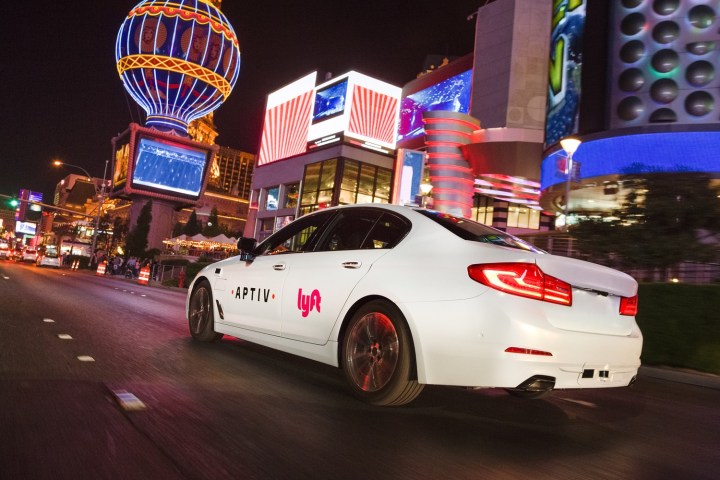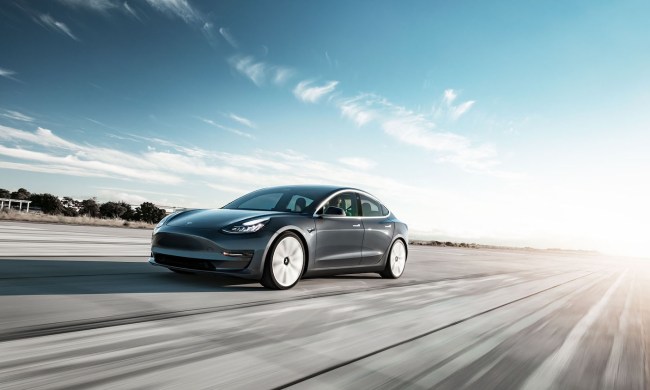
Autonomous rides will be available from January 9 to 12, departing from the Las Vegas Convention Center’s Gold Lot. Passengers will be walked through an exhibit extolling the virtues of self-driving cars before setting off (Aptiv and Lyft each have a product to sell, after all). Each car will have a safety driver in case something goes wrong, as well as an in-car host to explain the technology.
The CES demo is a byproduct of the current complex web of self-driving car partnerships. Prior to being purchased by Aptiv, Boston-based autonomous-driving startup NuTonomy had its own partnership with Lyft, and the two entities started an autonomous ridesharing pilot program in Boston late last year. Now NuTonomy owner Aptiv is stepping in to do things itself.
Autonomous-vehicle demonstrations are nothing new in Vegas. Automakers have brought self-driving cars to CES before, and a self-driving shuttle began operating in the city a few months ago. But the combination of autonomous driving and ridesharing is expected to have a bigger impact than either factor could have on its own.
Both Aptiv and Lyft are betting big on autonomous driving. Aptiv was previously the automotive supplier Delphi, but it reorganized and rebranded itself to focus more on autonomous-driving tech. Lyft has its own autonomous-car development program, as well as partnerships with Aptiv, Waymo, Ford, and startup Five.ai. The company wants to give 1 billion rides per year in autonomous electric cars by 2025.
Shuttling a few people around Vegas probably won’t contribute the development of self-driving cars on the scale of, say, the large-scale real-world tests being undertaken by the likes of Waymo and Uber. But it could accomplish an important goal: familiarizing people with autonomous cars and, potentially, making them more willing to go driverless in the future.


